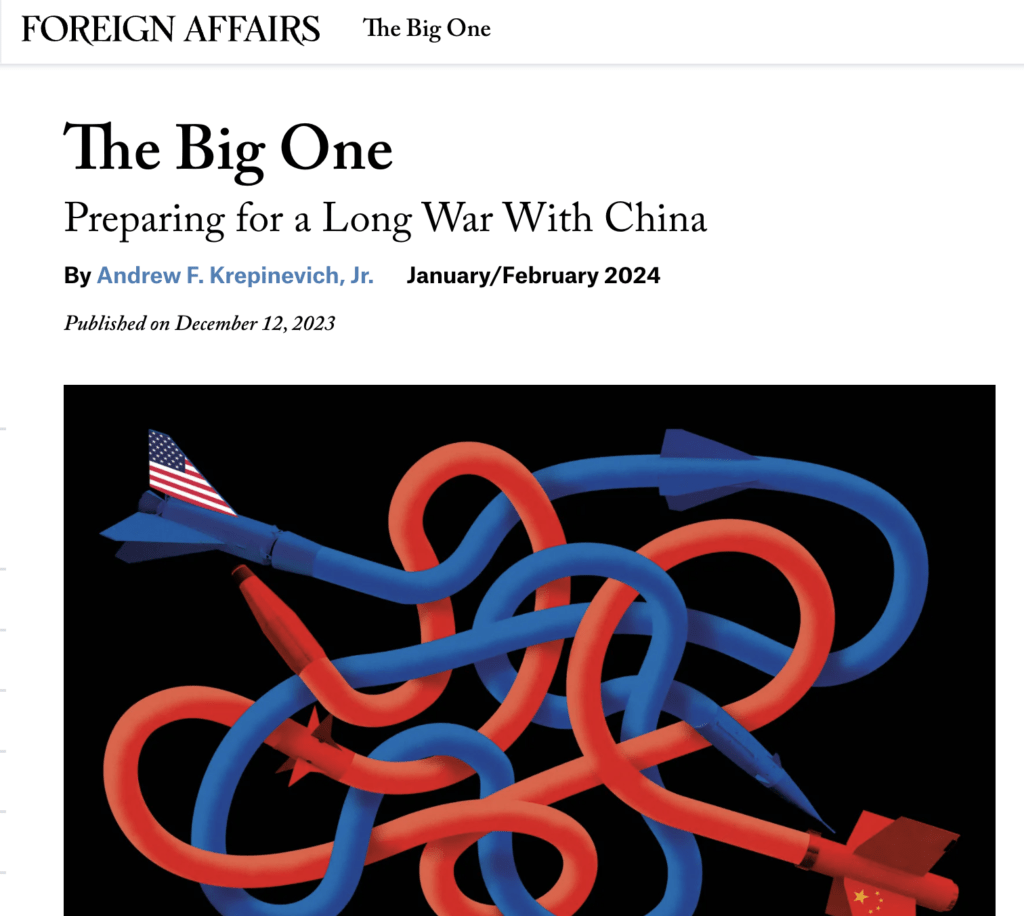”The United States must convince China that it can prevail in a long war,” wrote Andrew F. Krepinevich, Jr. in his Foreign Affairs article “The Big One: Preparing for a Long War With China”, published on December 12, 2023.
More and more American are voicing, that the U.S. should focus on China instead of Russia’s war in Ukraine.
In his Foreign Affairs article, Krepinevich writes on the evolving military dynamics between the United States and China, particularly in the context of Chinese aggression in the Indo-Pacific region. There are various potential conflict scenarios, the nuclear dimension, and the strategies both nations might adopt in case of a prolonged conventional war.
China’s increasing military assertiveness under Xi Jinping, especially its expansionist maritime claims and the looming threat over Taiwan. There is a shift in China’s posture from hypothetical to a real concern for U.S. defence planners, exacerbated by U.S. engagements in other global conflicts.

The Nuke Option
Krepinevich presents three main scenarios of a potential conflict between China and the U.S.
The first is a quick Chinese conquest of Taiwan, utilizing missiles, airstrikes, and cyberattacks. The second is a successful U.S.-led coalition defence against a Chinese assault, employing anti-ship missiles, submarines, and cyber-forces. The third, more alarming scenario, is a direct war leading to nuclear escalation and a potential Armageddon.
However, Krepinevich argues that a prolonged conventional war is a likely outcome. He reflects on the Cold War-era concept of mutually assured destruction (MAD) and suggests that this might prevent nuclear escalation, leading instead to a lengthy conventional war. The U.S. and China’s ability to ensure mutual destruction may act as a deterrent against nuclear weapon use.
Krepinevich emphasizes the need for the U.S. and its allies to prepare for various conflict scenarios, including those involving Taiwan, the Korean Peninsula, and even South Asia. He points out the geopolitical complexities and the uncertain responses of regional allies and partners in such a conflict.
In managing a potential war, both the U.S. and China would need to carefully navigate to avoid nuclear escalation, respecting each other’s redlines. The conflict might involve various war domains like maritime, space, and cyberspace, and could see the use of economic and information warfare tactics.
Lowering Reliance on China
Krepinevich suggests that the U.S. must focus on a strategy for a long war, emphasizing the importance of readiness and the ability to sustain defences over an extended period. He draws lessons from Cold War strategies, advocating for a systematic approach to address China’s military capabilities and intentions. The readiness of U.S. and its allies, particularly in terms of military resources and industrial capacity, is crucial.
It is vitally important to convince Beijing that the U.S. and its allies have the resources and resolve to prevail in a long war, Krepinevich wrote. It underscores the need for a different kind of deterrence, one that accounts for a protracted conflict below the nuclear threshold but with significant costs on economies, infrastructure, and societal well-being.
Read more:
Foreign Affairs: The Big One – Preparing for a Long War With China



